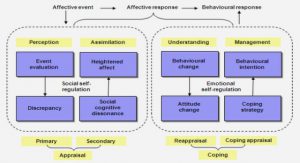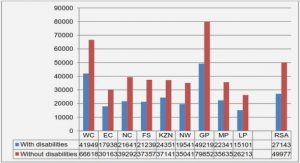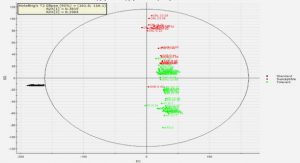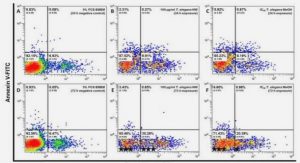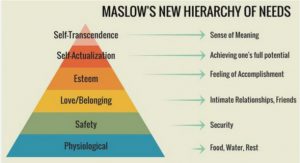Get Complete Project Material File(s) Now! »
chapter 2 : Literature Review
INTRODUCTION
The muscular dystrophies (MDs) are a genetic group of disorders of muscle degeneration due to mutations in genes that encode a wide variety of proteins. These proteins include extracellular matrix proteins, transmembrane and membrane‐associated proteins, cytoplasmic enzymes, and nuclear matrix proteins (Cohn and Campbell, 2000). The diseases vary enormously in terms of severity, age of onset, selective muscle involvement, and inheritance pattern. Even different mutations of single genes may cause dystrophies that range from the mildest to the most severe (Rando, 2002). Despite these variabilities, the most significant common feature among all of these disorders is necrotic degeneration of skeletal muscle cells, leading to, sooner or later, a loss of ambulation in the affected. Intensive investigation of the literature in this chapter will provide a comprehensive overview of the muscular dystrophies. It will more specifically shed light on the specific molecular events and mechanisms involved in the course of the dysferlinopathies.
Evidence of oxidative stress as the primary pathogenic factor contributing to the dystrophic process, and the progression of the disease condition, has been reported in dystrophin‐deficient MD (Murphy and Kehrer, 1989; Disatnik et al., 1998). Although this has not yet been proved in the dysferlinopathies, it seems likely to be relevant. Considering its less aggressive pathologic course, compared to DMD, such an observation would strengthen the possibility that the application of antioxidant supplementation in dysferlin‐deficient subjects may render significant value in the dysferlinopathies.
It therefore the aim of the present study to determine, on a cellular level, how the morphology and ultrastructure in dysferlin‐deficient SJL/J mouse muscle, will be affected by antioxidant supplementation. In order to proceed, it is of the essence to have an in depth understanding of the disease and its pathologic progression. A detailed review of the specific mechanisms, unravelled to date, in the dysferlinopathies, as well as their involvement in the pathogenesis and disease progression, is presented.
MUSCULAR DYSTROPHY
The muscular dystrophies are a heterogeneous group of inherited disorders characterized by progressive weakness and degeneration of skeletal muscles. Although known for the selective involvement of skeletal muscles, this selectivity in the MDs is not restricted only to weakness, but also extends to muscle wasting and enlargement (Pradhan, 2006). They have traditionally been classified by clinical presentation, mode of inheritance, age of onset, and overall progression. The development of molecular genetic mapping techniques has shown that a number of clinically similar conditions are linked to a variety of distinct single‐gene disorders. So far, the MDs have been mapped to at least 29 different genetic loci, that give rise to at least 34 different clinical disorders (Dalkilic and Kunkel, 2003), and additional information is accumulating rapidly (Lovering et al., 2005). Muscular dystrophy includes a spectrum of disorders caused by loss of the linkage between the extracellular matrix and the actin cytoskeleton (Laval and Bushby, 2004).
Duchenne muscular dystrophy (DMD), is the most common form of MD, affecting approximately one in 3 500 newborn males worldwide (Biggar et al., 2001; Metules, 2002; Wagner, 2002). It is an X‐ linked disorder that was first discovered more than a century ago (Duchenne, 1861). Duchenne MD is characterized by progressive wasting of skeletal muscles with the first signs of weakness detectable in the limb girdle muscles. The first symptoms of the disease manifest as early as 5 years of age, followed by an inability to walk by the age of 8 to 12 years (Brooke et al., 1989; McDonald et al., 1995).
Duchenne muscular dystrophy is caused by the absence of the protein dystrophin, a 427 kilodalton (kDa) protein localised to the cytoplasmic surface of the plasma membrane of muscle fibers in skeletal and cardiac muscle (Lovering et al., 2005). Becker muscular dystrophy (BMD) is an allelic variant of DMD. Whereas DMD is caused by the essential absence of dystrophin, BMD is caused by abnormalities in the quality or quantity of dystrophin (Lovering et al., 2005). It is generally believed that a greater amount of dystrophin results in a less severe form of the myopathy (Kakulas, 1999). The onset of BMD is usually between the ages of 5 and 15 years, but can occur as late as the fourth decade of life (Lovering et al., 2005). The phenotypic presentation of BMD is similar to that of DMD, but is clinically milder and with more variability and a much slower progression. Patients with BMD do not have contractures or severe scoliosis, and many live well into adulthood, sometimes to a normal life span (Lovering et al., 2005).
The dystrophin protein is responsible for mechanical stability of the sarcolemma. It is likely involved in force transmission between the intracellular contractile apparatus and the extracellular matrix (ECM), which envelops the fiber and is connected to the tendon (Petrof et al., 1993). Without dystrophin the structural stability of the sarcolemma is compromised, leading to fragility and inability to withstand the stresses of normal muscle contractions (Petrof et al., 1993). The resulting membrane damage leads to increased intracellular Ca2+, which activates proteases that ultimately result in fiber death or necrosis.
The regeneration of myofibers that normally occurs after damage to healthy skeletal muscle, also in the first few years of life in muscle of DMD patients, does not persist as these patients mature. The regenerative capacity of dystrophin‐deficient muscle becomes inadequate to effectively replace lost muscle fibers (Blau et al., 1983; Webster and Blau, 1990; Bockhold et al., 1998). Necrotic fibers are replaced by fat and connective tissue, leading not only to muscle wasting and weakness, but also to an apparent ‘pseudohypertrophy’ (Lovering et al., 2005). This phenomenon is mostly observed in calves of boys suffering from Duchenne’s. This muscle wasting and weakness is responsible for a clinical hallmark of the disease termed Gowers’ sign that was first described in 1887. It is also referred to as Gowers’ manoeuvre.
Gowers’ sign (Figure 2.1) was first illustrated by Sir William Richard Gowers (1845‐1915). He described the characteristic peculiarity in which children with Duchenne dystrophy rise from a seated position. These children use their upper body strength by placing their hands on their knees, climbing up their thighs by pushing with their hands and arms in order to overcome weakness of the pelvic girdle muscles when attempting to rise from the floor (Figure 2.1)(Pearce, 2000; Hartman et al., 2007).
The clinical hallmark of a condition, then termed pseudo‐hypertrophic muscular paralysis, known as Gowers’ sign, was described with exceptional detail by Gowers (Gowers, 1886 in Pearce, 2000). As this detailed clinical illustration still holds diagnostic value in modern medicine, Sir Gowers’ exact description is sketched in his own words in text box 2.1.
A great deal about the genetic basis of the dystrophin‐deficient disease has been unravelled (Lovering et al., 2005), since the cloning of the mutated gene in the 1980s (Murray et al., 1982; Kunkel et al., 1985). The identification of its protein product, dystrophin, (Hoffman et al., 1987) the complex it forms in muscle, (Ehmsen et al., 2002) and the mapping of mutations linked several MDs and their associated proteins to dystrophin.
In skeletal muscle injuries, particularly those resulting from lengthening, or eccentric contractions, the membrane is damaged and the cytoskeleton is disrupted (Lovering and De Deyne, 2004), leading to a compromise in the structural stability of the muscle cell. The initial injury is followed by pain, inflammation, and weakness that usually results in necrosis, which is then followed by regeneration of muscle fibers (Lovering et al., 2005). As an effect of the disease, continuous cycles of active regeneration and degeneration follows until this sequence of events eventually falls out of equilibrium, inevitably resulting in muscle wasting.
Dystrophin binds indirectly or directly to a group of proteins at the sarcolemma, collectively known as the dystrophin‐associated protein complex (DAPC or DPC) or the dystrophin‐glycoprotein complex (DGC) (Straub et al., 1997; Allamand and Campbell, 2000; Ehmsen et al., 2002; Lovering et al., 2005). Dystrophin binds to this complex through the interaction of its WW domain. The W represents the letter code of tryptophan. The WW domain is a protein‐binding module composed of 35 to 40 amino acids (aa) that include two conserved moieties of tryptophan (Bork and Sudol, 1994) and nearby sequences with the carboxyterminal (C‐terminal) cytoplasmic sequence of β‐dystroglycan (Jung et al., 1995), a transmembrane protein (Petrucci et al., 2001). The N‐terminal and extracellular portion of β‐dystroglycan associates with α‐dystroglycan, which in turn connect the DGC to the ECM (Petrucci et al., 2001). The major ligand of α‐dystroglycan in the ECM is likely laminin‐2, a major component of the basement membrane surrounding the muscle fibers. Neurexin and agrin may also be significant binding partners (Michele et al., 2002).
Additional components of the DGC include several sarcoglycans, which also span the sarcolemmal membrane, and peripheral membrane proteins, including syntrophins and dystrobrevins that bind to the C‐terminal region of dystrophin. Inside the muscle fiber, the N‐terminus of dystrophin binds to F‐ actin (Norwood et al., 2000), connecting the DGC to the actin cytoskeleton and ultimately to the contractile apparatus. Therefore, dystrophin is the central component of the molecular link that connects the contractile apparatus inside the muscle fiber to the ECM outside the muscle fiber (Lovering et al., 2005). Dystrophin plays a crucial structural role in stabilizing the sarcolemma during muscle contraction (Petrof et al., 1993), and is thought to transmit force laterally across the sarcolemma to the ECM (Tidball, 1991; Patel and Lieber, 1997). In contrast to DGC‐linked muscular dystrophies, dysferlin‐linked muscular dystrophies introduce a new class of the disease where the repair, and not the structure of the plasma membrane, is disrupted (Bansal and Campbell, 2004). This is a novel mechanism of muscle degeneration (Bansal and Campbell, 2004).
LIMB‐GIRDLE MUSCULAR DYSTROPHIES
Limb girdle muscular dystrophy is the generic name for a heterogenous group of neuromuscular disorders inherited either dominantly or recessively. They are characterized by muscle wasting and atrophy mostly in the shoulder and pelvic girdle but with a quite variable degree of severity and disease course (Urtizberea et al., 2008).
The diagnostic criteria for this subclass of MDs include raised serum creatine kinase (CK) activity, myopathic electromyography, muscle biopsy with features ranging from mildly myopathic to overt dystrophic changes and absence or reduction of a protein involved in the specific form of LGMD, on a Western blot (Borsato et al., 2006). Differential diagnosis of these disorders requires the careful application of a broad range of disciplines including, clinical assessment, immunohistochemistry and immunoblotting, using a panel of antibodies and extensive molecular genetic analysis (Laval and Bushby, 2004).
Within this subclass of MDs are the forms of limb‐girdle muscular dystrophy caused by deficiencies of the sarcoglycan complex and by aberrant glycosylation of α‐dystroglycan caused by mutations in the fukutin‐related protein gene. However, other forms of this disease have distinct pathophysiological mechanisms (Laval and Bushby, 2004). Deficiency of dysferlin disrupts sarcolemmal membrane repair, whilst loss of calpain‐3 may exert its pathological influence either by perturbation of the IκBα/NF‐κB pathway or through calpain‐dependent cytoskeletal remodelling (reviewed in Laval and Bushby, 2004). Implicated in numerous cell‐signalling pathways (Shaul and Anderson, 1998), caveolin‐3 is also involved in the biogenesis of the transverse tubule (T‐tubule) system (Parton et al., 1997). Alterations to the nuclear lamina caused by mutations in lamin A or C, sarcomeric changes in titin, telethonin or myotilin at the Z‐disc, and subtle changes in the extracellular matrix proteins laminin‐α2 or collagen VI can all lead to limb‐girdle muscular dystrophy phenotypes. However, the specific pathological mechanisms remain obscure (Laval and Bushby, 2004).
The muscle pathology is characterized by necrotic and regenerating fibers, increase in fiber size variation, fiber splitting and centrally located myonuclei. Chronic cycles of degeneration and regeneration of muscle fibers result in replacement of muscle with fatty and fibrous tissue (Borsato et al., 2006). The quest for order in the group of diseases designated ‘limb‐girdle’ muscular dystrophy (LGMD) in the classifications of the 1950’s has led in various directions over the past 50 years (Bushby, 1999 a). For most of this time, LGMD has been an unpopular and poorly defined diagnostic term conveying little information for either the clinician or the patient. In the initial classifications, the description of LGMD emphasized heterogeneity. This include the potential for either autosomal recessive (a defect or mutation on the gene from the chromosome of each parent is involved) or autosomal dominant (single gene defect on a chromosome from either parent or one copy of a mutant gene and one normal gene) inheritance, onset of disease in either the pelvic girdle or the shoulder girdle musculature, and slow or more rapid progression. Even sporadic cases of LGMD have been reported (Stübgen and Stipp, 1997; Stübgen, 2008), emphasising the heterogeneity in this group of disorders.
Earlier on, exclusion of alternative diagnoses was the only diagnostic tool, and for a while the existence of a separate ‘LGMD’ category at all, was questioned (Bushby, 1999 a). When it became clear that the level of heterogeneity was likely to be great, with several independent loci identified, a locus‐based classification was proposed by a consortium meeting under the auspices of the European Neuromuscular Centre. It was agreed to name the different LGMD loci based on chronological order and mode of inheritance; with the dominant LGMD loci designated LGMD 1A, B, C, etc., and the recessive forms as 2A, B, C, etc., in the order of their identification. The suffix ‘1’ points out the dominant form, and the suffix ‘2’, the recessive form (Bushby, 1999 a; Urtizberea et al., 2008).
The starting point for investigation of these patients is clinical examination, as many clues can be gained from the history and examination as to what type of LGMD might be present (Bushby, 2000 a). Just more than a decade ago, the protein involved in chromosome 2‐linked LGMD, limb girdle muscular dystrophy type 2B (LGMD 2B), was identified (Bashir et al., 1998; Liu et al., 1998). Dysferlin is the product of a novel mammalian gene which shows homology to a nematode protein, ferlin‐1 (FER‐1), involved in spermatogenesis (Achanzar and Ward, 1997; Bashir et al., 1998). In 1999, Yasunaga and co‐workers identified a second human gene, otoferlin, which shows high homology to both dysferlin and FER‐1. Otoferlin was implicated in an autosomal recessive form of non‐syndromic deafness. All three proteins were predicted to share a number of common characteristics: a C‐ terminal transmembrane domain and at least three C2 domains (Bushby, 1999, b). Davis and co‐ workers, 2000, described the identification and characterization of another member of the ferlin family, which they called myoferlin, a protein nearly identical in size to dysferlin. Myoferlin was found to associate with the plasma membrane fraction of skeletal muscle, but was also found in nuclei, and enriched in nuclear membrane fractions (Davis et al., 2000).
CHAPTER ONE: INTRODUCTION
CHAPTER TWO: LITERATURE REVIEW
2.1 Introduction
2.2 Muscular dystrophy
2.3 Limb‐girdle muscular dystrophies
2.4 Dysferlinopathy
2.4.1 Clinical phenotypes
2.4.2 Clinical features
2.4.3 Muscle pathology
2.4.4 Muscle involvement
2.4.5 Mutations
2.4.6 Pathogenic mechanism of dysferlinopathy
2.5 Dysferlin
2.5.1 Other members of the ferlin‐protein family
2.5.2 C2 domains
2.5.3 Dysferlin‐mediated membrane repair: response to membrane wounding
2.5.4 Proteins that interact with dysferlin
2.5.4.1 Caveolin‐3
2.5.4.2 Calpain 3
2.5.4.3 Annexins a1 and a2
2.5.4.4 AHNAK
2.5.4.5 Affixin (β‐parvin)
2.5.4.6 Myogenin
2.5.4.7 Bin 1
2.6 Diagnosis and therapy
2.7 Oxidative stress
2.7.1 Susceptibility of skeletal muscle to oxidative stress
2.7.2 Evidence of oxidative stress in muscular dystrophy
2.8 Implication for antioxidants
2.9 Prospective antioxidants
2.9.1 Coenzyme Q10
2.9.2 CoQ10 as an antioxidant
2.9.3 Resveratrol
2.10 Study objectives
CHAPTER THREE: A 90 DAY ANTIOXIDANT SUPPLEMENTATION TRIAL IN THE SJL/J MOUSE MODEL FOR DYSFERLINOPATHY
3.1 Introduction
3.2 Animal models in scientific practice
3.3 SJL/J mice
3.3.1 Origin of the SJL/J model
3.3.2 General information on the SJL/J strain
3.3.3 Justification of the model for dysferlinopathy studies
3.3.4 Histological characteristics of the SJL/J model
3.3.5 Muscle regenerative capacity
3.4 The animal study
3.4.1 Design and layout
3.4.2 Dose calculation, dose preparation, supplements, and solvents
3.4.3 Routine procedures and observations during the course of the 90 day study
3.4.3.1 Dosing
3.4.3.2 Weighing
3.4.3.3 Tensile strength test
3.4.3.4 Food supplementation
3.4.3.5 Observations
3.4.4 Findings, difficulties and limitations
3.4.5 Health guidelines
3.5 Termination procedures
CHAPTER FOUR: MEASURING NON‐SPECIFIC PARAMETERS NOT DIRECTLY RELATED TO MUSCLE CELL STRUCTURE, AND NOT DIRECTLLY AFFECTING HISTOPATHOLOGY IN DYSFERLIN‐DEFICIENT MUSCULAR DYSTROPHY
4.1 Introduction
4.2 Materials and methods
4.2.1 Weights and tensile strength
4.2.2 Haematological analysis
4.2.3 Laboratory tests
4.3 Results and discussion
4.3.1 Body weight
4.3.2 Physical strength
4.3.3 Blood enzyme levels (ck & ldh)
4.3.4 Differential white blood cell count
4.4 Concluding remarks
CHAPTER FIVE: HISTOLOGICAL ASSESSMENET OF SJL/J MICE TREATED WITH COENZYME Q10 AND RESVERATROL
5.1 Introduction
5.2 Materials and methods
5.3 Results and discussion
5.4 Concluding remarks
CHAPTER SIX: INVESTIGATION TO THE ULTRASTRUCTURAL CHANGES IN SJL/J MICE FOLLOWING ANTIOXIDANT SUPPLEMENTATION
6.1 Introduction
6.2 Materials and methods
6.3 Results and discussion
6.4 Concluding remarks
CHAPTER SEVEN: OXIDATIVE STRESS IN THE SJL/J MOUSE AND THE EFFECT OF COENZYME Q10 AND RESVERATROL SUPPLEMENTATION
7.1 Introduction
7.2 Materials and methods
7.3 Results and discussion
7.4 Concluding remarks
CHAPTER EIGHT: CONCLUDING DISCUSSION
REFERENCES

